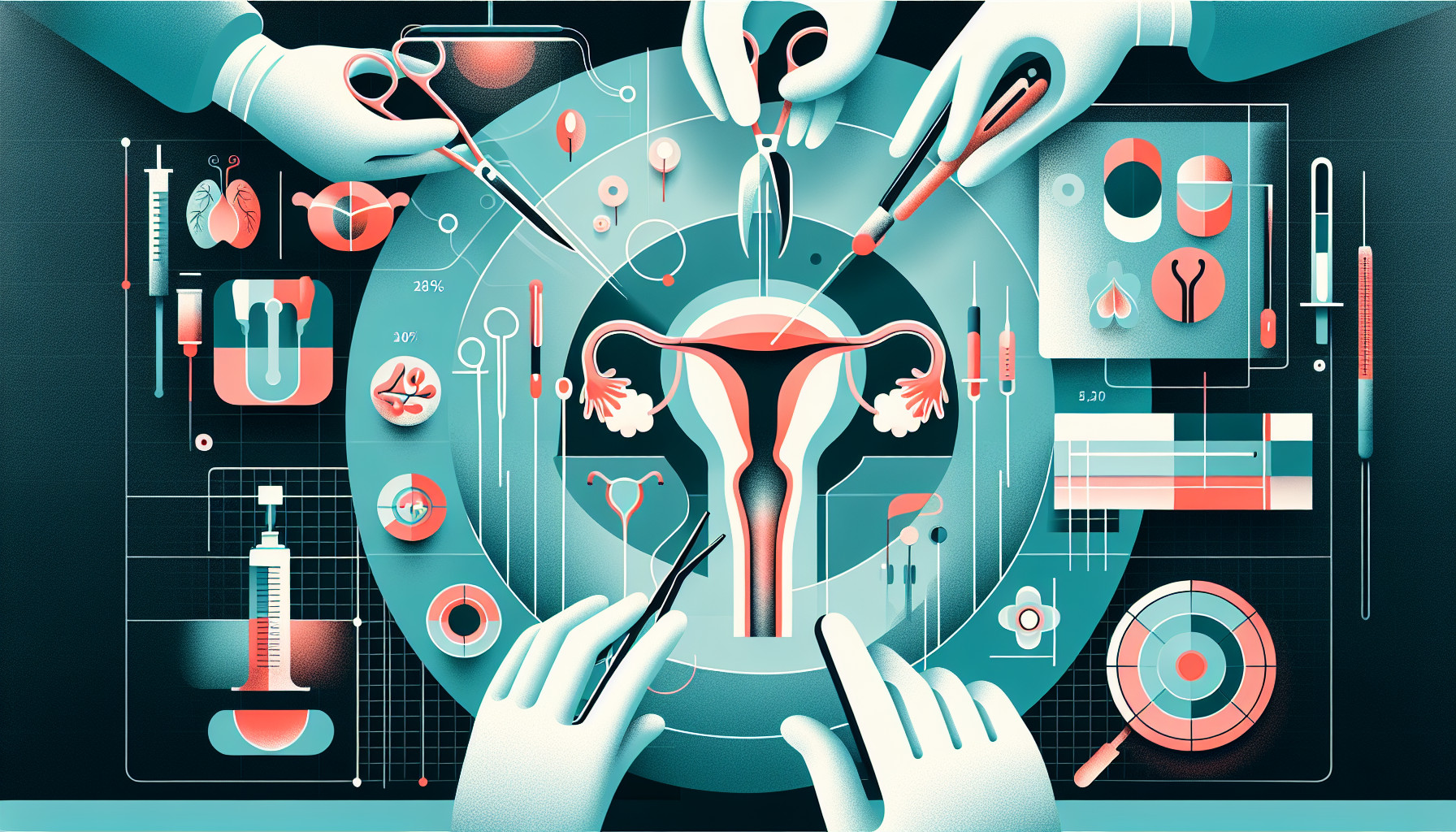Our Summary
This research paper discusses two main types of surgery used to treat male urethral stricture, a condition where the urethra (the tube that carries urine from the bladder out of the body) becomes narrowed.
The first type of surgery is anastomotic urethroplasty, a procedure that connects two ends of the urethra together. This has been particularly successful in treating short bulbar urethral stricture (a narrowing in the part of the urethra near the base of the penis) and posterior urethral stricture (a narrowing that occurs after a pelvic fracture).
The second type is substitution urethroplasty, a procedure where a piece of tissue (from skin or oral mucosa) is used to replace the narrowed part of the urethra. This type of surgery can be done in one stage or in multiple stages, depending on the complexity of the case.
The paper suggests that the most common type of surgery currently used is the one-stage substitution urethroplasty. However, for more complicated cases, multiple stages are often necessary.
Choosing the best type of surgery and the best substitute material for each individual patient is a challenge that needs further attention. More long-term data is needed to objectively compare the success rates of the different types of surgery and substitute materials.
FAQs
- What are the two main types of urethroplasty?
- What materials are typically used for substitution urethroplasty?
- What are the different situations in which anastomotic urethroplasty and substitution urethroplasty are most effective?
Doctor’s Tip
One helpful tip a doctor might tell a patient about urethroplasty is to follow post-operative care instructions carefully to ensure proper healing and reduce the risk of complications. This may include avoiding strenuous activities, keeping the surgical area clean and dry, taking prescribed medications as directed, and attending follow-up appointments with the doctor. It is also important to communicate any concerns or changes in symptoms to the doctor promptly.
Suitable For
Urethroplasty is typically recommended for patients with male urethral strictures, especially those with short bulbar urethral strictures and posterior urethral strictures after pelvic fractures. It is also used for iatrogenic, single, short, or non-occluded strictures. The procedure is divided into anastomotic urethroplasty, which includes primary anastomosis urethroplasty and non-transecting anastomotic urethroplasty, and substitution urethroplasty, which includes staged urethroplasty and one-stage urethroplasty. Pedicle skin flap and free mucosal graft are commonly used as substitution materials. One-stage substitution urethroplasty is the most widely used, but complicated cases may require staged urethroplasty. The selection of the best surgical procedure and substitute materials on an individual basis is a key consideration for successful outcomes. Long-term follow-up data is crucial for evaluating the efficacy of different surgical procedures and grafts.
Timeline
Before urethroplasty, a patient may experience symptoms of urethral stricture, such as difficulty urinating, weak urine flow, frequent urination, and urinary tract infections. The patient will undergo various tests and evaluations to confirm the diagnosis and determine the severity of the stricture.
After urethroplasty, the patient will typically spend a few days in the hospital for monitoring and recovery. They may experience some pain and discomfort in the surgical area, which can be managed with pain medication. The patient will need to follow post-operative care instructions, including taking antibiotics to prevent infection, avoiding strenuous activities, and attending follow-up appointments with their healthcare provider. Over time, the patient should experience improved urinary function and a reduction in symptoms related to urethral stricture.
What to Ask Your Doctor
Some questions a patient should ask their doctor about urethroplasty may include:
- What type of urethroplasty procedure do you recommend for my specific case?
- What are the potential risks and complications associated with urethroplasty?
- How long is the recovery period after urethroplasty?
- Will I need to undergo any additional procedures or treatments after urethroplasty?
- What are the success rates of urethroplasty in treating urethral strictures?
- How often will I need follow-up appointments after the procedure?
- Are there any lifestyle changes or precautions I should take after urethroplasty?
- Will I experience any changes in urinary function or sexual function after urethroplasty?
- Are there any alternative treatments or procedures available for urethral strictures?
- Can you provide me with information about the experience and success rates of your previous urethroplasty patients?
Reference
Authors: Xiu XJ, Song LJ. Journal: Zhonghua Wai Ke Za Zhi. 2022 Nov 1;60(11):981-986. doi: 10.3760/cma.j.cn112139-20220507-00203. PMID: 36323579
